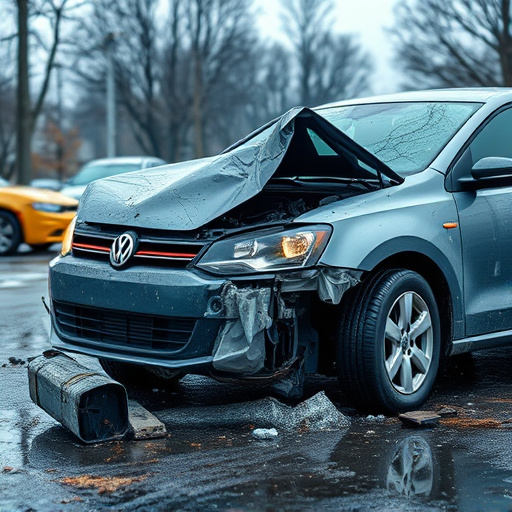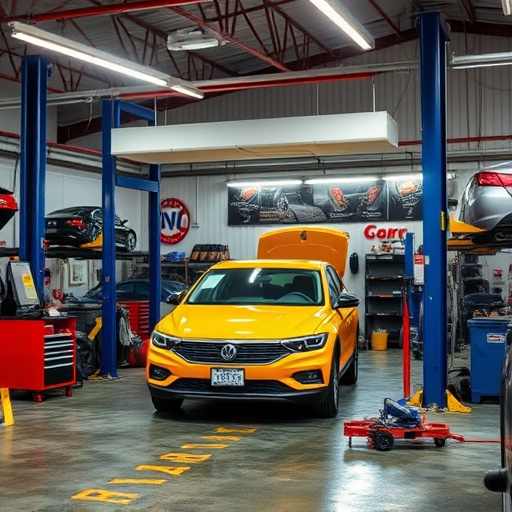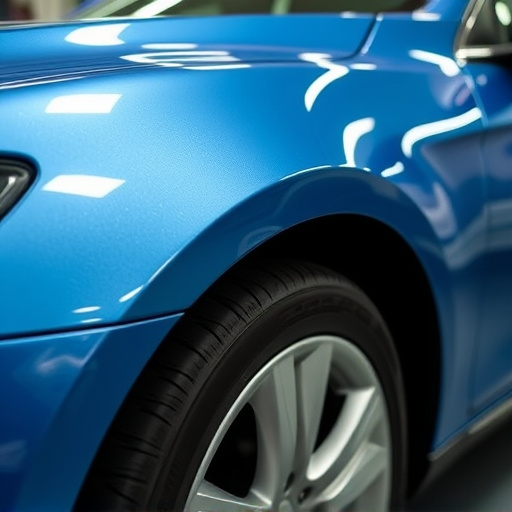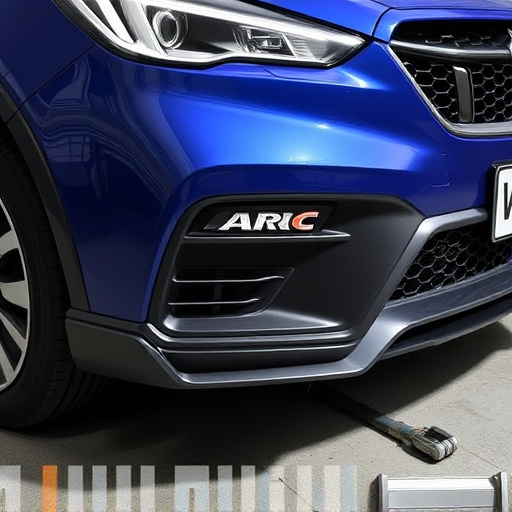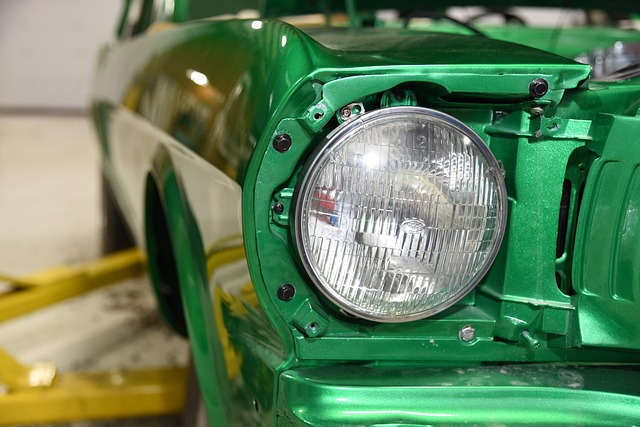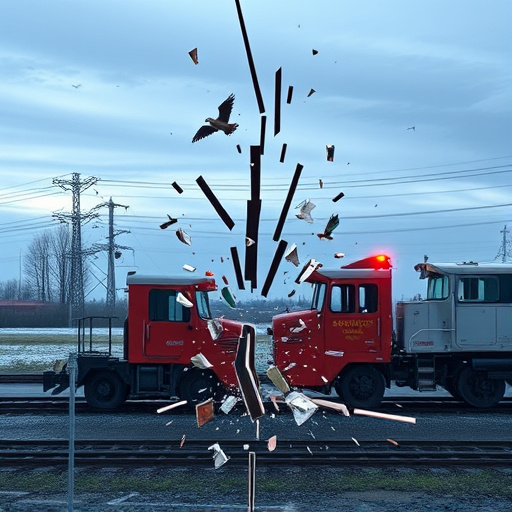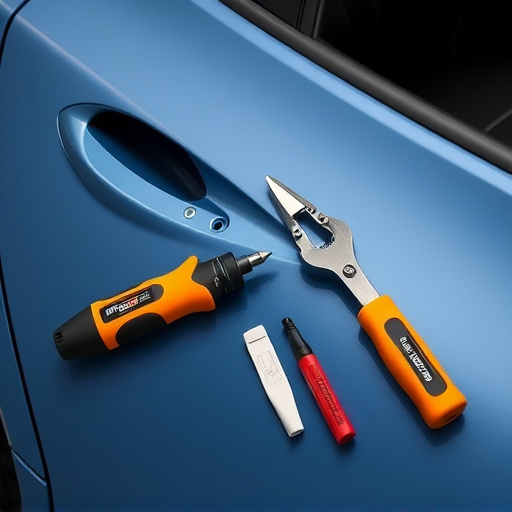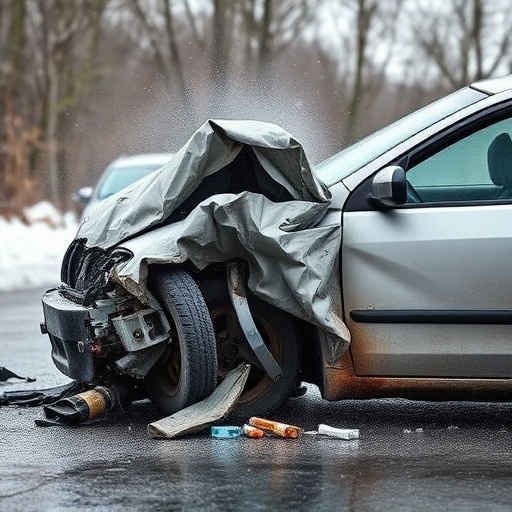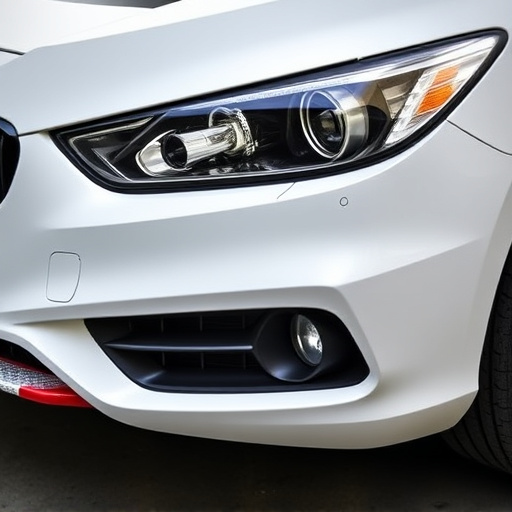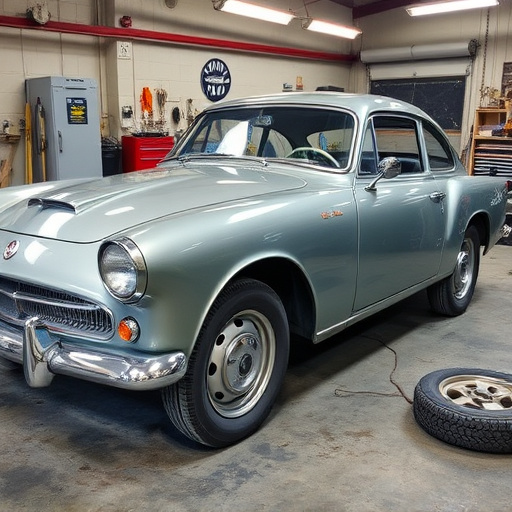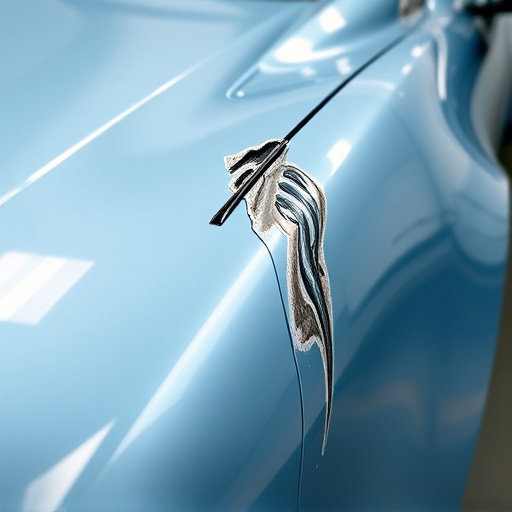Selecting the correct alloys in metal fabrication for collision repair is crucial for achieving both structural integrity and aesthetic appeal. Key alloys like aluminum offer lightweight properties for fuel efficiency, while steels provide superior tensile strength for complex repairs. Understanding common blends incorporating magnesium or zinc enhances corrosion resistance in modern vehicles. Collision repair professionals must adapt to these changing materials by considering application-specific needs, shop conditions, availability, and cost, ensuring high-quality, long-lasting work.
In the realm of metal fabrication collision repair, choosing the right materials is paramount for restoring vehicles to their pre-accident condition. This article delves into the common metals and alloys that form the backbone of modern automotive body repair, highlighting critical selection factors. Furthermore, it explores the essential tools and techniques that have revolutionized precision and efficiency in collision shops. Finally, it discusses sustainability and future trends, including advancements poised to reshape the industry, ensuring both superior repairs and environmental stewardship.
- Choosing the Right Metal Alloys for Collision Repair
- – Common metal alloys used in automotive body repair
- – Factors to consider when selecting metal alloys
Choosing the Right Metal Alloys for Collision Repair
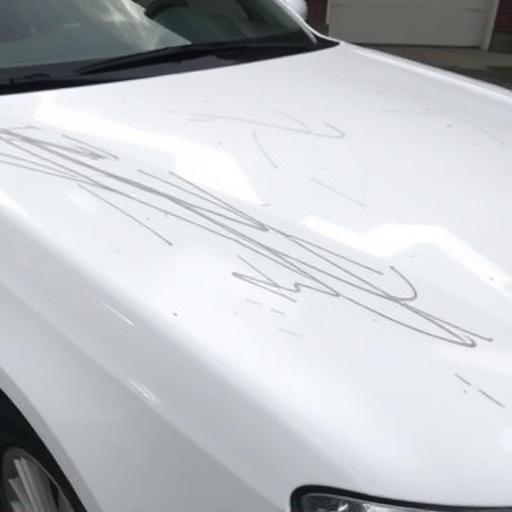
When it comes to metal fabrication for collision repair, selecting the appropriate alloys is a critical step in achieving both structural integrity and aesthetic perfection. Different metals have distinct properties that make them more suitable for specific repair tasks. For instance, aluminium alloys are lightweight yet highly resistant to corrosion, making them ideal for modern vehicle designs that prioritize fuel efficiency. These alloys are commonly used in fender repair and other body shop services where reducing weight is essential without compromising strength.
Steels, on the other hand, offer superior tensile strength and durability, making them the go-to choice for more complex collision repairs, especially when structural integrity is paramount. High-strength steels are employed in repairing damaged vehicle frames and panels, ensuring that the car can withstand the rigours of the road safely. In the event of a fender bender or minor collision, selecting the right metal alloy can significantly impact the overall quality and longevity of the body shop services provided.
– Common metal alloys used in automotive body repair
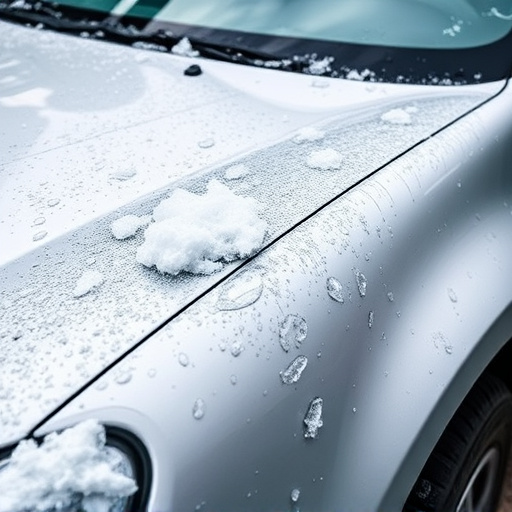
In the realm of metal fabrication collision repair shops, understanding the common metal alloys is paramount for high-quality auto body repairs. Steel remains a staple, prized for its strength and versatility in shaping and welding. Aluminum is another prevalent material, favored for its lightweight properties, which not only enhance fuel efficiency but also facilitate faster and more precise auto body repair work.
Specific alloy blends, such as those containing magnesium or zinc, offer enhanced corrosion resistance, a crucial aspect in ensuring longevity of collision repair services. These alloys are increasingly used in modern vehicles, complicating tasks for auto body repair professionals but also presenting opportunities to showcase advanced skills in metal fabrication. The variety of materials demands that collision repair shops stay updated on the latest techniques and technologies to handle these diverse metals effectively.
– Factors to consider when selecting metal alloys
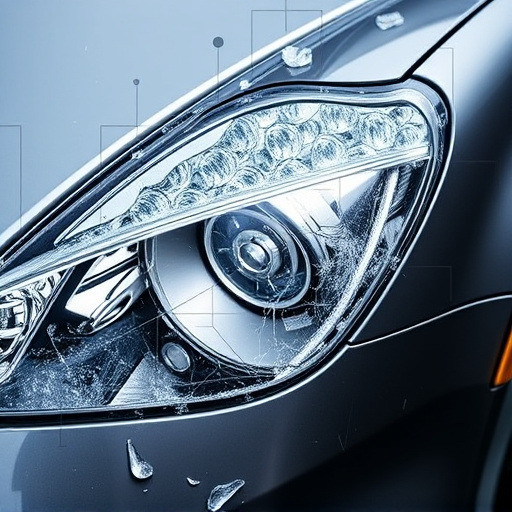
When selecting metal alloys for use in metal fabrication collision repair shops, several factors come into play. First and foremost, consider the specific application and the properties required for each component being replaced or repaired. Different metals have unique combinations of strength, durability, conductivity, and resistance to corrosion, making some more suitable than others for particular tasks. For instance, lightweight alloys like aluminium are often preferred in auto body repairs due to their excellent strength-to-weight ratio, which can enhance fuel efficiency while still providing robust structural integrity.
Additionally, the environmental conditions and working environment within the collision shop itself must be factored in. Extreme temperatures or exposure to corrosive substances may require the use of more resilient alloys that offer superior resistance to oxidation or other forms of degradation. Furthermore, the availability and cost of materials should not be overlooked, as this can significantly impact the overall budget for auto body repairs and tire services. Balancing these considerations allows collision repair shops to select the most appropriate metal alloys, ensuring high-quality, long-lasting results in their work.
In the realm of metal fabrication collision repair, selecting the appropriate metal alloys is paramount for achieving robust and aesthetically pleasing results. By understanding the common alloys used in automotive body repair and considering factors such as strength, ductility, and corrosion resistance, shops can ensure their work stands the test of time. Armed with this knowledge, collision repair professionals can make informed decisions, utilizing the best materials to deliver top-notch repairs that satisfy both customers and vehicles alike.
